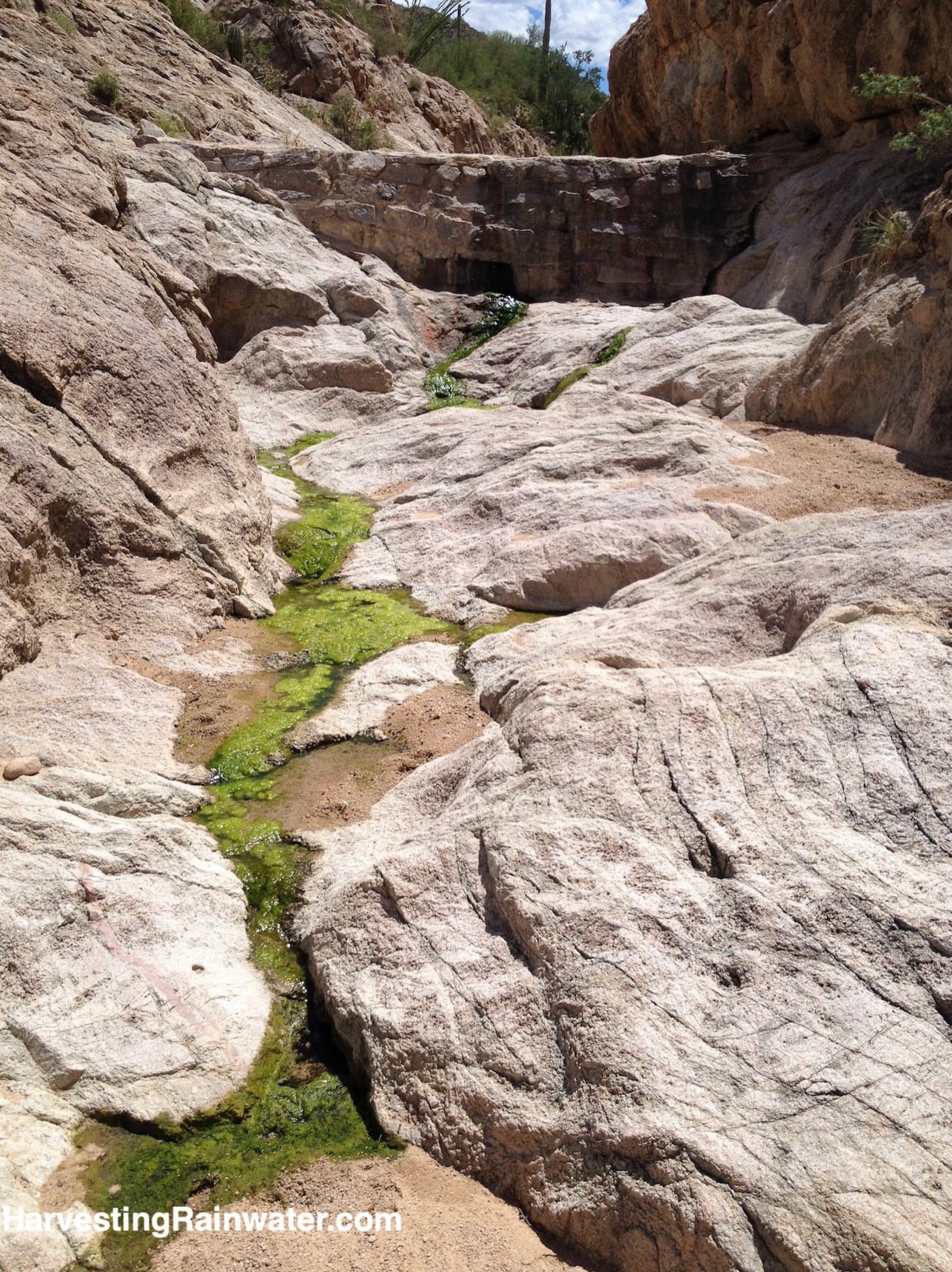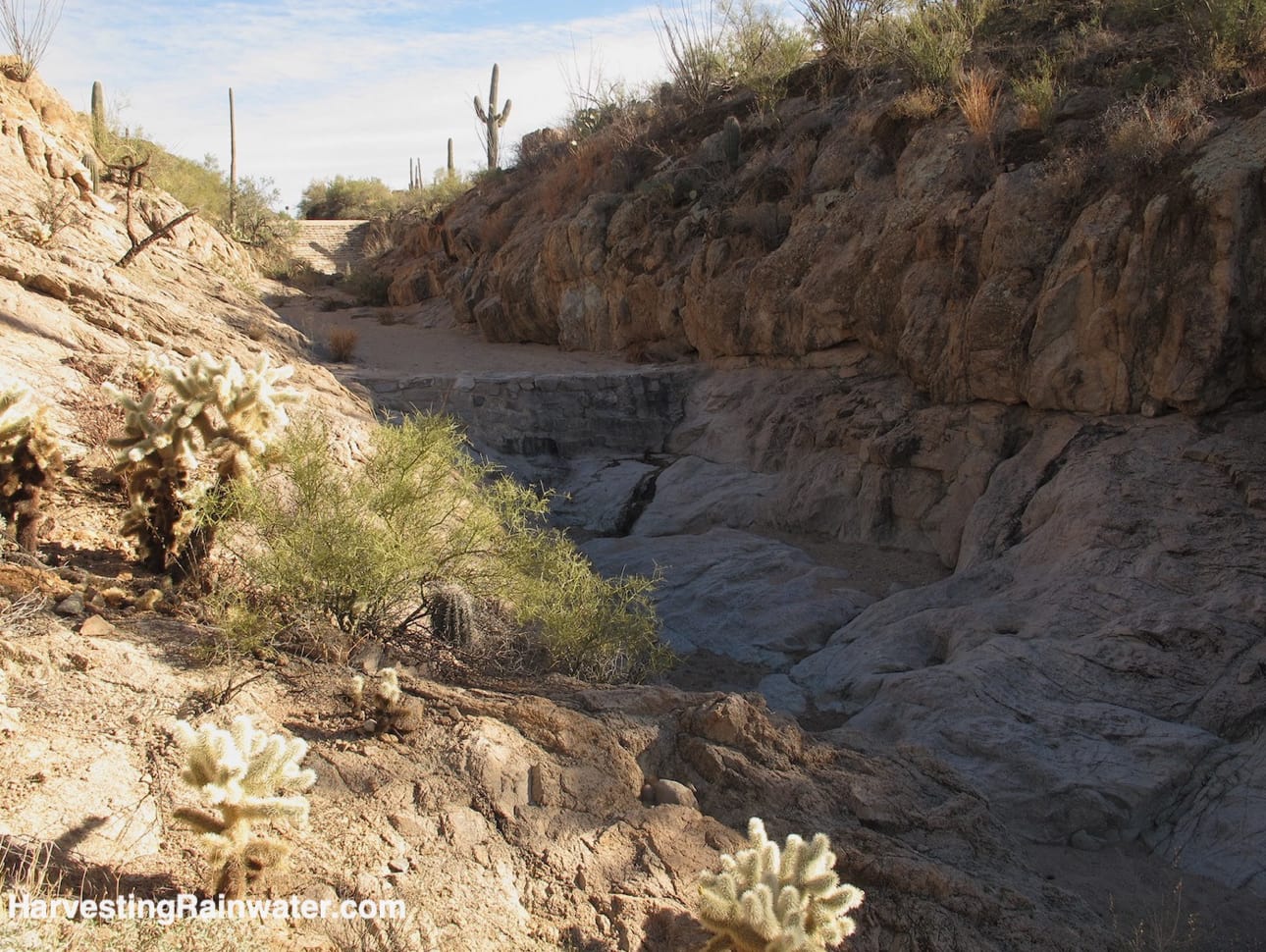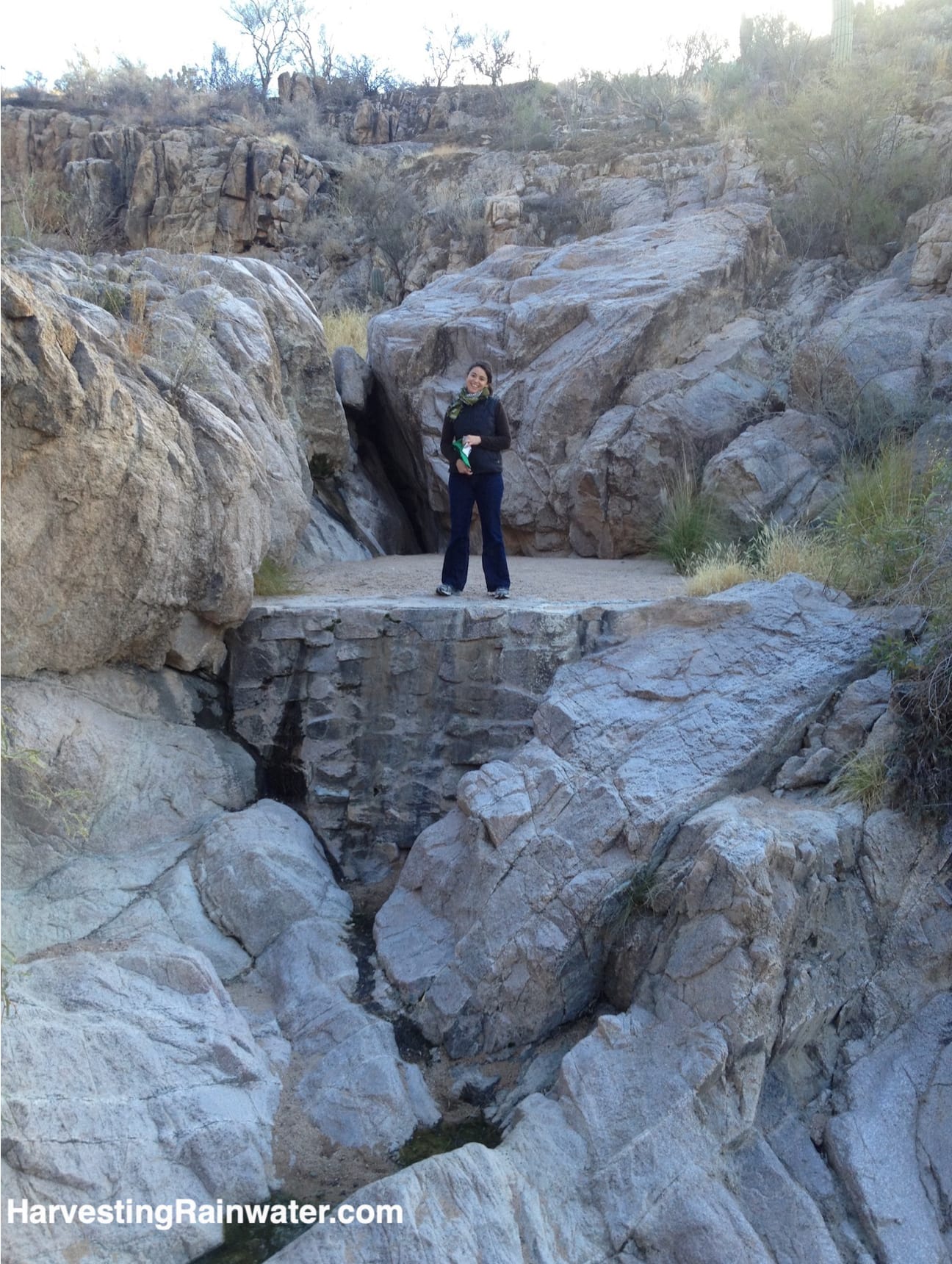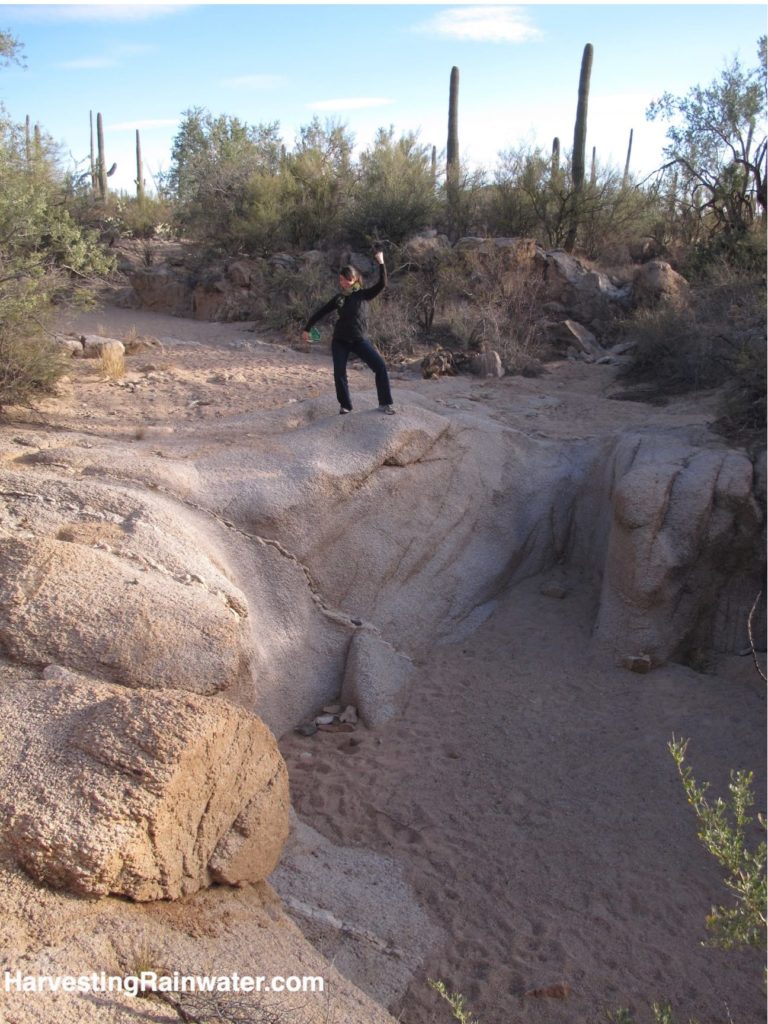Sus picnic area historic check dams
built by the Civil Conservation Corps in the 1930s, and resulting seep springs
Passive water-harvesting natural bedrock check dams, historic mortared stone check dams, and resulting seep springs can be seen less than a quarter mile from the parking lot.

Photo: Brad Lancaster

Photo: Brad Lancaster

Photo: Brad Lancaster
From a national park service placard at the Sus picnic area:
During America’s Great Depression, unemployment reached 25 percent. In March 1933, President Franklin Delano Roosevelt established the Civilian Conservation Corps (CCC) in a desperate effort to stem the tide of unemployment. Young men, 18 to 25 years old, were recruited for conservation work in the nation’s parks and forests.
By October, the first recruits arrived in Tucson. Camps Pima, Papago, and Tanque Verde were built on or near lands which later became units of Saguaro National Monument. A side camp was erected in Randolph Park.
Under the supervision of the National Park Service, workers built dams and picnic facilities. Earth-filled (check) dams were constructed in the lower reaches of the Tucson Mountains for flood control. Masonry (check) dams were built in upper canyons and arroyos to prevent erosion. CCC crews filled abandoned mine shafts, removed traces of mining roads, built fire breaks and trails, fired adobe bricks, rebuilt rocky desert roads, and reseeded degraded areas with native grasses.
By 1942, shortly after America entered the Second World War, the CCC program ended. While few traces of the their camps remain, you may have hiked the trails and picnicked at CCC-built sites at Sabino Canyon and Mt. Lemmon. Small watering holes in the Tucson Mountains are still quenching the thirsts of birds and animals, and stone fireplaces, ramadas, tables, and restrooms here and at Signal Hill and Ez-kim-in-zan Picnic Areas have lasted for over 50 years. Fine craftsmanship and sturdy local materials are the hallmark of these significant historic structures. Please help us protect and preserve them.
See chapter 10 of Rainwater Harvesting for Drylands and Beyond, Volume 2, 2nd Edition for more of these and other in-channel water-harvesting strategies.

These dams control the grade of the water channel’s bed, by not allowing the bed to down cut to a deeper elevation upstream of the bedrock dam.
When water flows over a natural or built check dam, the force of the falling water typically creates a scour pool on the downslope side of the check dam, unless bedrock impedes the formation of such a pool.
In sediment-rich ephemeral waterways, these pools often fill with sediment.
Photo: Brad Lancaster
Model: Gabrielle Pietrangelo – check out her wonderful Rainwater Spiritual song
Where:
Bajada Wash, Saguaro National Park West
32.27193541116368, -111.2110613120791
Hours: Daily, sunrise to sunset
Cost: National Park annual or lifetime passes
Saguaro National Park Weekly Pass – $25.00/vehicle
Purchase Your Pass Online
Admits one single, private, non-commercial vehicle and all its passengers. Organized groups are not eligible for the vehicle permit.
Saguaro National Park Weekly Pass – $20.00/motorcycle:
Purchase Your Pass Online
Admits one single motorcycle. Organized groups are not eligible for the motorcycle permit.
Saguaro National Park Individual Weekly Pass – $15.00/person
Purchase Your Pass Online
Admits one individual when entering by foot or bicycle. Individuals 15 years or younger are admitted free of charge.
For related tour sites see:
• Where rocks have made the water flow: a water-harvesting Arizona ranch
• Historic check dams in the Catalina and Tucson Mountains
• Pima Canyon bedrock mortars, check dams & their springs
• Altar Valley Conservation Alliance & ranch-based water harvesting
This location is included in the following tours:
See the new, full-color, revised editions of Brad’s award-winning books
– available a deep discount, direct from Brad:

Volume 1
THE book to show you how to assess your free on-site waters such as rainwater, stormwater, greywater, and air conditioning condensate; then create an integrated plan to harvest them.
Includes informative and inspirational case studies and hundreds of images.

Volume 2
This book has step-by-step instructions for how to design, place, and build many different water-harvesting earthworks for many different contexts including one-rock dams, rock-mulch rundowns, sheet flow collectors, rock-lined plunge pools, filter dams, and sheet flow spreaders—all of which can be used in different contexts within ephemeral waterways.
Many case studies using such strategies are included to inspire and inform you.
